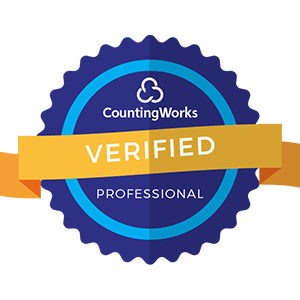
Introduction: In today's rapidly evolving business landscape, organizations face an unprecedented challenge: preparing their workforce for the future of work. As automation, artificial intelligence, and digital transformation reshape industries, the skills required to succeed are changing at an astonishing pace. To remain competitive and ensure long-term success, companies must prioritize upskilling at scale. In this article, we'll explore the critical importance of upskilling, the obstacles organizations face, and the strategies they can employ to prepare their workforce for the future.

The World Economic Forum estimates that by 2025, 50% of all employees will need reskilling due to the adoption of new technologies. This staggering statistic underscores the urgency of upskilling initiatives. As the skills gap widens, organizations that fail to invest in their workforce risk falling behind their competitors and losing top talent to more forward-thinking companies.
Upskilling offers numerous benefits for both employees and organizations:
Despite the clear benefits, many organizations struggle to implement effective upskilling initiatives at scale. Some common obstacles include:

To overcome these obstacles and prepare their workforce for the future, organizations must adopt a strategic approach to upskilling. Here are some key strategies to consider:
Upskilling initiatives should be closely aligned with the organization's overall business strategy and objectives. By identifying the skills that will be most critical for future success, companies can prioritize their upskilling efforts and ensure that they are investing in the right areas.
To foster a workforce that is adaptable and resilient, organizations must cultivate a culture of continuous learning. This involves encouraging employees to take ownership of their professional development, providing them with the resources and support they need to acquire new skills, and recognizing and rewarding their efforts.
Technology can be a powerful ally in scaling upskilling efforts. By leveraging digital learning platforms, organizations can provide employees with access to a wide range of high-quality learning content, personalized learning paths, and interactive experiences. This approach allows for greater flexibility, cost-effectiveness, and reach compared to traditional classroom-based training.
Encouraging collaboration and knowledge sharing among employees can accelerate the upskilling process. Peer-to-peer learning, mentoring programs, and cross-functional projects provide opportunities for employees to learn from one another and apply their new skills in real-world situations.
To ensure the effectiveness of upskilling initiatives, organizations must establish clear metrics and regularly assess their impact. This may involve tracking employee engagement, skills acquisition, job performance, and business outcomes. By continuously measuring and iterating based on the results, companies can refine their approach and optimize their upskilling efforts over time.
By prioritizing upskilling at scale, organizations can build a workforce that is prepared for the challenges and opportunities of the future. A future-ready workforce is characterized by:

To ensure that upskilling initiatives are effective and impactful, organizations can apply the E-A-A-T framework:
In a world where change is the only constant, upskilling at scale is no longer a nice-to-have — it's a business imperative. By investing in their workforce and prioritizing continuous learning, organizations can build a future-ready workforce that is equipped to navigate the challenges and seize the opportunities of the years ahead. The path to upskilling at scale may be complex, but with the right strategies, frameworks, and mindset, any organization can prepare its workforce for the future of work.
As Thomas Friedman famously said, "The world is flat." In today's global, interconnected economy, the playing field has been leveled, and the organizations that will thrive are those that can adapt, innovate, and upskill at scale. By embracing the urgency of upskilling and taking a strategic, holistic approach to workforce development, companies can not only survive but thrive in the face of unprecedented change.
The future of work is uncertain, but one thing is clear: the skills and capabilities of an organization's workforce will be the key to its long-


